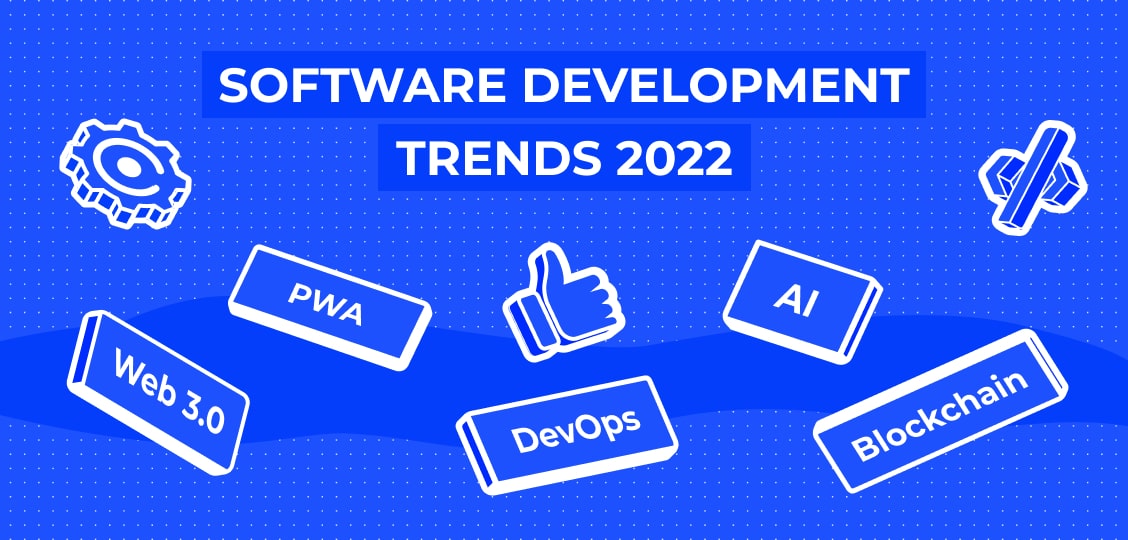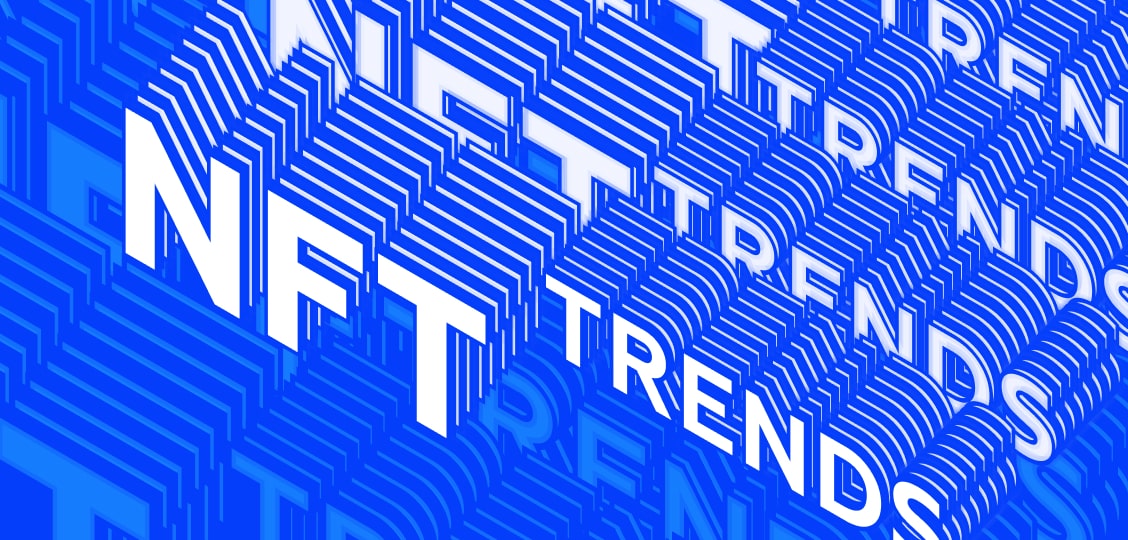Top 8 software development trends for 2022 you should be aware of
Read our article to learn how you can automate business processes, boost customer engagement, build digital trust, and reduce costs by applying the latest software development trends.

Before the emergence of cloud computing services, companies had to purchase licensed software products and configure infrastructure on-premise. Enterprises were also forced to acquire and install hardware and software to create applications. As a result, organizations had to spend a lot of time and effort setting up servers, maintaining systems, and scaling resources.
With cloud computing, businesses became able to significantly reduce expenses while improving time to market. Unlike on-premise solutions, cloud computing provides access to the necessary resources—such as networks, operating systems, data storage—over the Internet on demand.
Since cloud computing offers plenty of benefits, the demand for it has surged over the past years. Increased Internet and smartphone penetration, remote collaboration, as well as growing volumes of data are the key factors driving the widespread adoption of cloud computing. According to ReportLinker, the worldwide cloud computing market is predicted to spike from $445.3 billion in 2021 to $947.3 billion by 2026, at a CAGR of 16.3% during the indicated period.
Cloud computing has various delivery models, including software as a service (SaaS), platform as a service (PaaS), and infrastructure as a service (IaaS).
In this article, we will describe all of them in detail to help you find out how you can take advantage. But before we start, let’s consider what anything as a service (XaaS) is, so that you get a clear understanding of all concepts.
Anything as a service encompasses any tools, applications, and resources that are delivered via the cloud. XaaS refers to any computing service that is accessed over the Internet on a subscription basis.
There are numerous types of XaaS:
As XaaS is a broad category that includes a range of solutions, its operating model may be different for every enterprise.
XaaS services are generally governed by service level agreements (SLAs), in which vendors and their customers specify contract terms. With XaaS, organizations purchase what they need and pay for the resources that they actually utilize. This way, companies avoid the necessity to install, configure, and maintain software and hardware for performing the required tasks.
Anything as a service brings multiple advantages that involve cost savings, improved time to market, flexibility to focus on core business, scalability, and reliability. Now, let’s consider the most popular models that involve SaaS, PaaS, and IaaS.
Software as a service is a licensing and delivery model that offers access to a software solution on a subscription basis. Also known as on-demand software and web-hosted software, SaaS means that the app is deployed on external servers and is generally available via a web browser while users sign in with their logins and passwords. Thus, customers do not have to install the software on their desktops.
SaaS has the following characteristics:
A SaaS model has multiple advantages:
While SaaS provides a variety of benefits, there are some drawbacks that firms and institutions should consider. A SaaS model generally does not fit companies that want to integrate an application, which is highly customized to their business-specific needs and goals.
The risk of security breaches is another issue that you should take into account. When choosing a SaaS system, it is important to find out how the vendor safeguards sensitive data and sign in an agreement regulating all potential bottlenecks like the liability for data leakage.
Examples of popular SaaS solutions are:
Software as a service is utilized across the majority of business sectors, involving healthcare, insurance, education, retail, and hospitality. Enterprises employ SaaS in processes such as accounting, messaging, invoicing, digital marketing, customer relationship management (CRM), enterprise resource planning (ERP), and human resource management (HRM).
Platform as a service is a cloud computing model that enables customers to build, test, run, and deploy applications while avoiding the need to maintain infrastructure. PaaS vendors offer a cloud platform—involving servers, development tools, databases, networking, middleware, etc.—to manage the product lifecycle.
Basically, PaaS has three components:
The types of the platform as a service:
There are many benefits of PaaS:
PaaS is often used in building microservices and serverless architectures that allow for achieving scalability, high availability, fault tolerance, and performance.
Examples of trusted PaaS vendors: Amazon Web Services (AWS), Microsoft Azure, and Google Cloud Platform.
At Arateg, our team employs PaaS solutions to automate app development, testing, and deployment while enabling scalability, resilience, and performance. Using technologies available in the PaaS tooling, our professionals implement features like two-factor authentication, role-based access permissions, and data encryption to ensure security.
In software development, infrastructure comprises a range of components (software, hardware, networks, operating system, etc.) that are used to manage IT environments, for instance, store data and deploy code. Servers, wires, appliances, and routers are parts of the infrastructure.
Traditionally, organizations hosted their information technology infrastructure on-premise. With the emergence and widespread adoption of cloud computing services, many enterprises migrated to infrastructure as a service.
IaaS is a cloud computing model, in which a provider hosts the infrastructure in the cloud on behalf of its clients. Customers, in their turn, access the infrastructure via the Internet. Like PaaS, IaaS includes servers, storage, and networking.
There is a variety of IaaS advantages:
Examples of IaaS: All companies delivering PaaS give access to the cloud infrastructure, too. For instance, Microsoft Azure provides enterprise-grade infrastructure that comprises cloud compute capacity, storage, and networking services.
Recognizing the benefits of cloud computing, organizations across numerous industries are switching to SaaS, PaaS, and IaaS. With cloud computing solutions, companies reduce feature release cycles, cut expenditures, and increase employee productivity while achieving scalability and high availability.
When choosing a cloud computing model, enterprises should first determine their business requirements and objectives. For instance, if you aim to build, test, and run applications, you need not simply infrastructure but a development environment that contains tools, servers, middleware, networks, and other vital components. Therefore, PaaS will be your choice.
If you want to create a cloud-based system or migrate to the cloud, contact our team. Our software experts will get back to you in 1 working day and help address all issues. Project consultation is free of charge.

Read our article to learn how you can automate business processes, boost customer engagement, build digital trust, and reduce costs by applying the latest software development trends.

Explore the key NFT trends for 2022 to find out how you can generate revenue with non-fungible token marketplaces.
Now, you will receive a fresh newsletter from us.
Get the latest scoop on software application tips, announcements, and updates from us. Subscribe to our newsletter!